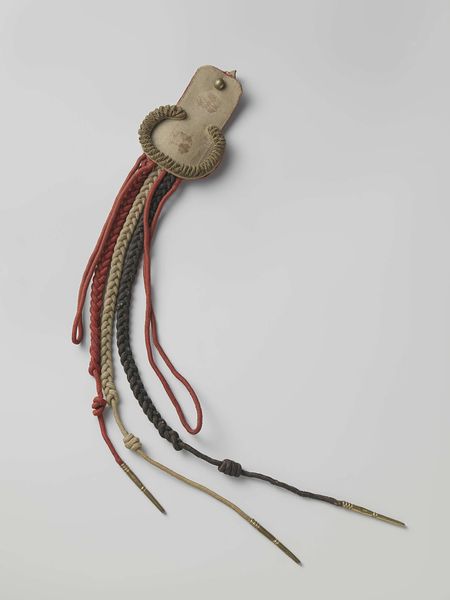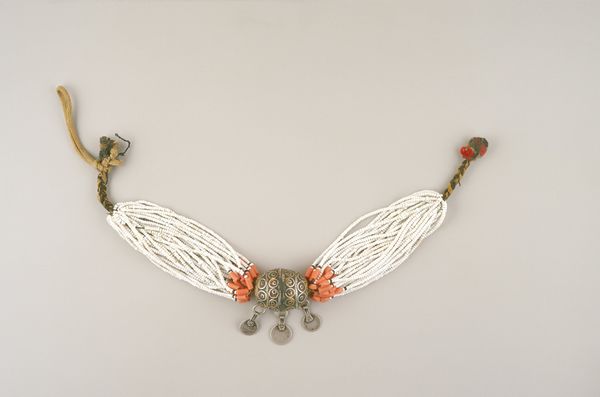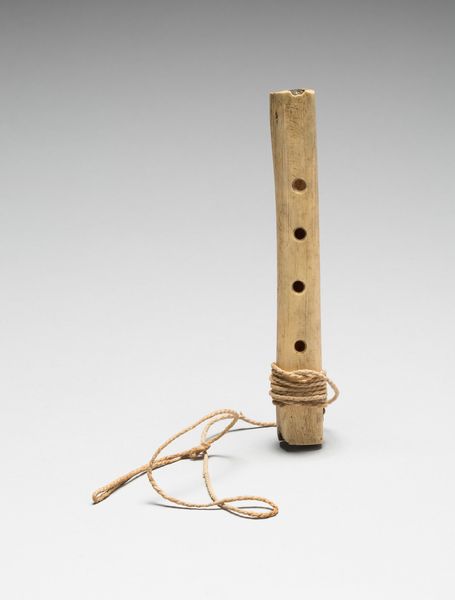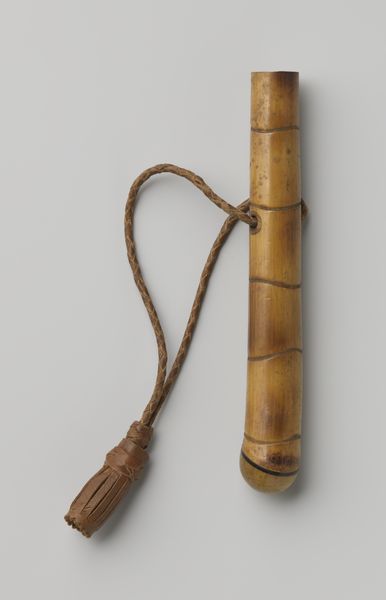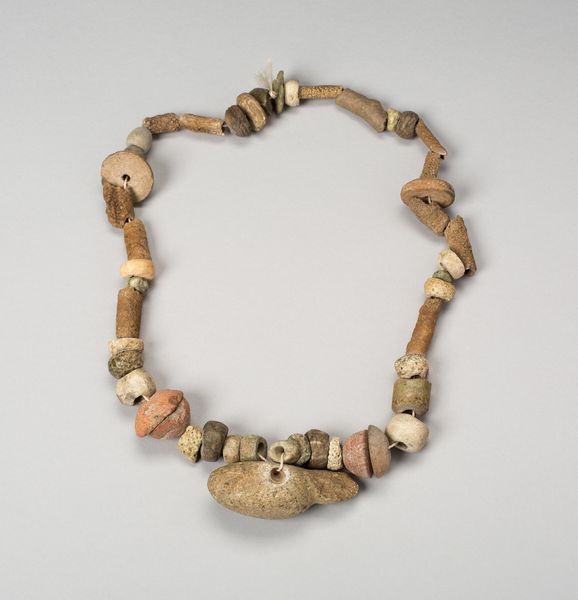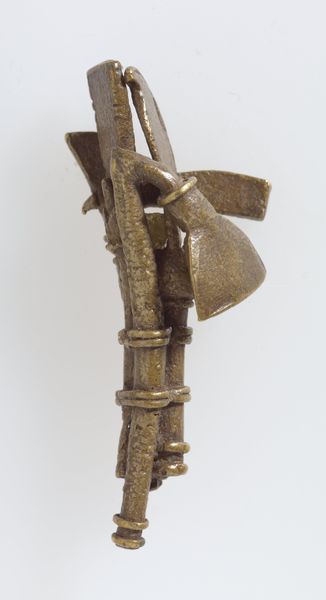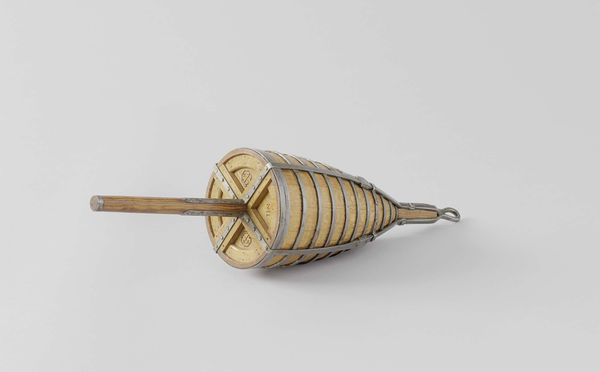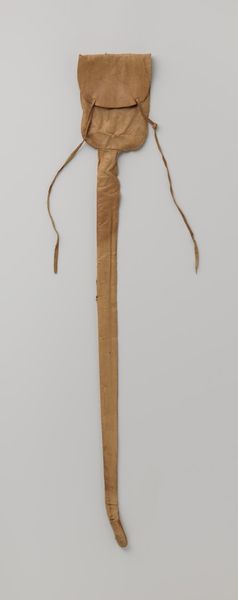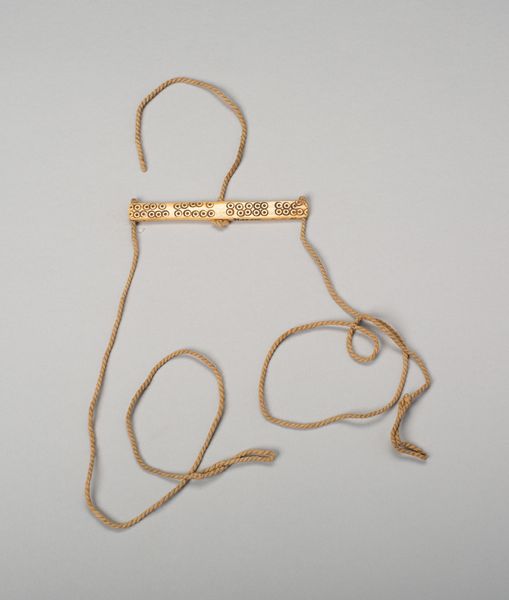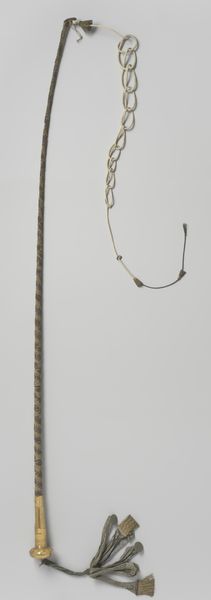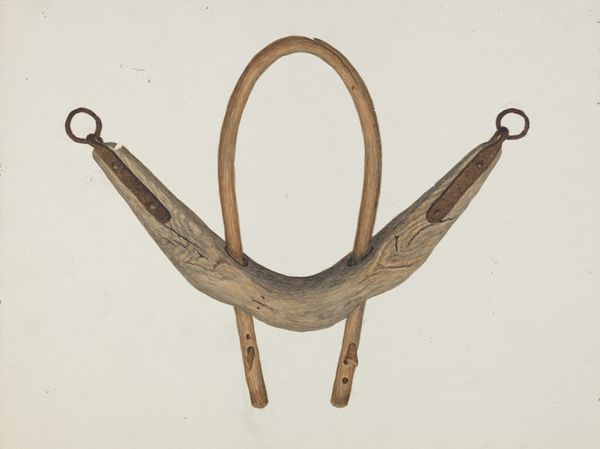
Balance-Beam Scale with Geometric Cut-out Motifs and String holding Shell Pendants Possibly 500 - 800
0:00
0:00
carving
#
carving
#
geometric
#
indigenous-americas
Dimensions: 9.7 × 2 cm (3 13/16 × 3/4) (scale only)
Copyright: Public Domain
Curator: Here we have a Balance-Beam Scale with Geometric Cut-out Motifs and String holding Shell Pendants, created by the Nazca people, potentially between 500 and 800 AD. Editor: It’s surprisingly delicate, almost jewel-like, with those repetitive triangles and the creamy shell fragments hanging below. There is an intricate geometric cutout pattern atop the bar with pendants seemingly strung together, adding weight and a visual anchor. Curator: The artistry displayed highlights the scale's importance beyond mere measurement. The Nazca were meticulous in their crafting, reflecting a hierarchical society where aesthetics conveyed status. Think about the labor involved in creating these geometric patterns without modern tools. Editor: Yes, the symbolism here is compelling. The repetitive geometry can speak to ordered power structures and a desire to maintain harmony, or perhaps something about agricultural planning when it comes to the pendants. It begs us to consider how indigenous traditions might connect objects to earth’s bounty. What exactly was measured? Did gender impact that at all? Curator: Given its sophistication, the scale may have weighed valuable goods – maybe even affecting ritual exchange networks and thus broader cultural narratives across the region. Its presence in the Art Institute elevates it from a mere tool to an artifact imbued with meaning. Editor: So a tension then, in museums exhibiting utilitarian pieces. I mean, on one hand, we appreciate the craftsmanship; yet also potentially erase the lives behind its original creation. Can we ensure displays honor the full spectrum of cultural purposes and not reduce items solely to formalist aesthetics? Curator: That tension between aesthetics and functional purpose really underlies much of the museum's choices about display and interpretation, but pieces like this serve to highlight it productively. Editor: Ultimately, this scale presents a visual puzzle, beckoning us to acknowledge the complexities and social stratifications, both historical and continued. Curator: A tool, a work of art, and a conduit to understanding a distant yet deeply connected civilization. I’m left pondering value: how did these peoples weight the concept of balance?
Comments
No comments
Be the first to comment and join the conversation on the ultimate creative platform.
